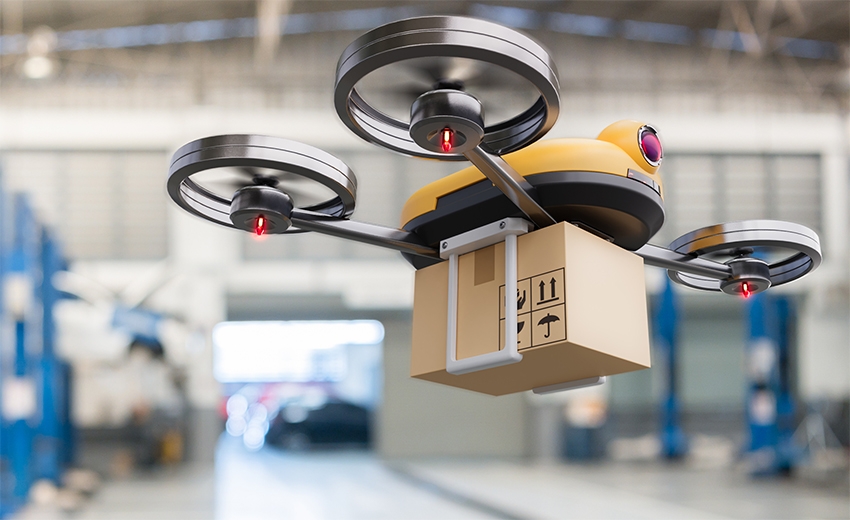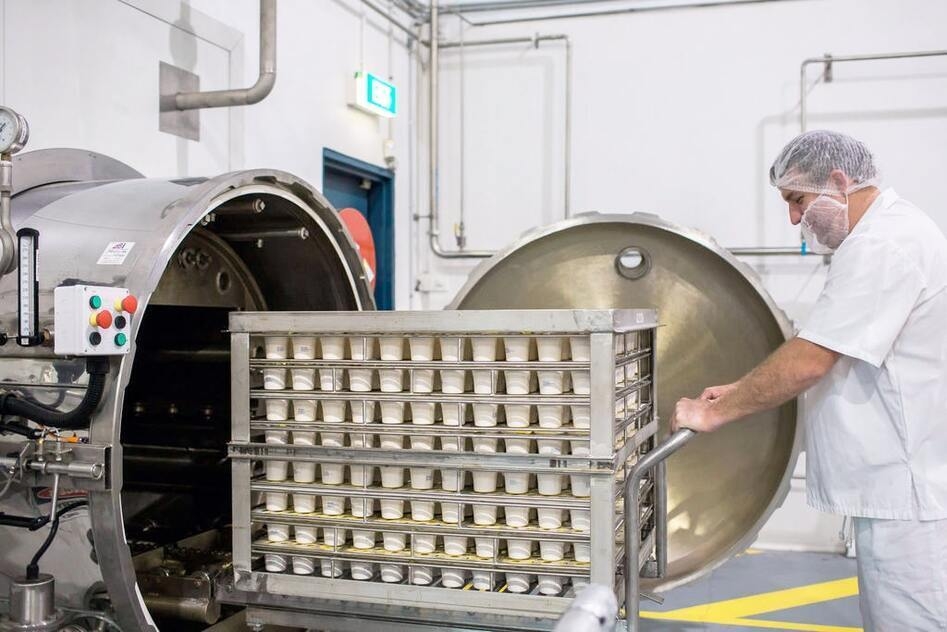1. Delivery Drones: Enhancing Logistics in Remote Locations
Delivery drones, also known as unmanned aerial vehicles (UAVs), are transforming the logistics and transportation industry by providing a faster, more efficient method of delivering packages, medical supplies, food, and other goods directly to consumers or businesses. These drones bypass traditional delivery methods like trucks and couriers, leveraging advancements in technology to meet the increasing demand for rapid delivery services. The process typically begins with a customer placing an order through an app or website. Once the order is received, it is processed and packaged at a fulfilment centre, then loaded onto a drone. These drones can be controlled remotely or operate autonomously using pre-programmed flight paths and GPS coordinates. Upon reaching the delivery location, the drone hovers above the drop-off point and uses a winch or other lowering mechanism to gently place the package on the ground before returning to its base.
The benefits of delivery drones are numerous. They offer significant speed and efficiency, particularly for last-mile deliveries, as they can bypass traffic and take the most direct route to the destination. This ensures faster delivery compared to traditional methods. Additionally, drones can be cost-effective by reducing the need for human drivers and vehicles, potentially lowering operational costs for delivery companies and offering cheaper delivery options for consumers. Environmentally, drones are typically powered by electric batteries, making them a more sustainable option compared to gas-powered delivery trucks, thus helping to reduce the carbon footprint of the logistics industry. Furthermore, drones can access remote or hard-to-reach areas where traditional delivery vehicles might struggle, which is particularly beneficial for delivering medical supplies to rural or disaster-stricken regions.
However, the widespread adoption of delivery drones faces several challenges. Regulatory hurdles are a significant barrier, as many countries have strict regulations governing the use of drones, especially in urban areas. These regulations are designed to ensure safety and privacy but can limit the deployment of drone delivery services. Safety concerns are also paramount, as drones must be equipped with advanced sensors and collision-avoidance systems to prevent accidents. Additionally, most delivery drones have limited payload capacity, restricting their use to small to medium-sized packages. Weather dependency is another issue, as drones are susceptible to adverse weather conditions such as strong winds, rain, and snow, which can affect their performance and reliability.
Delivery drones are revolutionizing logistics by providing fast, efficient delivery of packages, medical supplies, and food. These electric-powered UAVs bypass traffic, reduce operational costs, and access remote areas. Despite regulatory and safety challenges, advancements in technology promise a broader implementation of drone delivery services in the future.
Despite these challenges, the future of delivery drones looks promising. Major companies like Amazon, UPS, and DHL are investing heavily in this technology, and ongoing advancements in battery life, payload capacity, and autonomous navigation are expected to enhance the capabilities of delivery drones. As regulations evolve to accommodate drone operations, we can anticipate a broader implementation of drone delivery services across various sectors.
Conclusion:
In conclusion, delivery drones represent a significant leap forward in the logistics industry, offering numerous benefits in terms of speed, cost, and environmental impact. While challenges remain, the continued development and integration of drone technology hold the potential to transform the way goods are delivered in the future.
https://www.marketdigits.com/delivery-drones-market 1. Delivery Drones: Enhancing Logistics in Remote Locations
Delivery drones, also known as unmanned aerial vehicles (UAVs), are transforming the logistics and transportation industry by providing a faster, more efficient method of delivering packages, medical supplies, food, and other goods directly to consumers or businesses. These drones bypass traditional delivery methods like trucks and couriers, leveraging advancements in technology to meet the increasing demand for rapid delivery services. The process typically begins with a customer placing an order through an app or website. Once the order is received, it is processed and packaged at a fulfilment centre, then loaded onto a drone. These drones can be controlled remotely or operate autonomously using pre-programmed flight paths and GPS coordinates. Upon reaching the delivery location, the drone hovers above the drop-off point and uses a winch or other lowering mechanism to gently place the package on the ground before returning to its base.
The benefits of delivery drones are numerous. They offer significant speed and efficiency, particularly for last-mile deliveries, as they can bypass traffic and take the most direct route to the destination. This ensures faster delivery compared to traditional methods. Additionally, drones can be cost-effective by reducing the need for human drivers and vehicles, potentially lowering operational costs for delivery companies and offering cheaper delivery options for consumers. Environmentally, drones are typically powered by electric batteries, making them a more sustainable option compared to gas-powered delivery trucks, thus helping to reduce the carbon footprint of the logistics industry. Furthermore, drones can access remote or hard-to-reach areas where traditional delivery vehicles might struggle, which is particularly beneficial for delivering medical supplies to rural or disaster-stricken regions.
However, the widespread adoption of delivery drones faces several challenges. Regulatory hurdles are a significant barrier, as many countries have strict regulations governing the use of drones, especially in urban areas. These regulations are designed to ensure safety and privacy but can limit the deployment of drone delivery services. Safety concerns are also paramount, as drones must be equipped with advanced sensors and collision-avoidance systems to prevent accidents. Additionally, most delivery drones have limited payload capacity, restricting their use to small to medium-sized packages. Weather dependency is another issue, as drones are susceptible to adverse weather conditions such as strong winds, rain, and snow, which can affect their performance and reliability.
Delivery drones are revolutionizing logistics by providing fast, efficient delivery of packages, medical supplies, and food. These electric-powered UAVs bypass traffic, reduce operational costs, and access remote areas. Despite regulatory and safety challenges, advancements in technology promise a broader implementation of drone delivery services in the future.
Despite these challenges, the future of delivery drones looks promising. Major companies like Amazon, UPS, and DHL are investing heavily in this technology, and ongoing advancements in battery life, payload capacity, and autonomous navigation are expected to enhance the capabilities of delivery drones. As regulations evolve to accommodate drone operations, we can anticipate a broader implementation of drone delivery services across various sectors.
Conclusion:
In conclusion, delivery drones represent a significant leap forward in the logistics industry, offering numerous benefits in terms of speed, cost, and environmental impact. While challenges remain, the continued development and integration of drone technology hold the potential to transform the way goods are delivered in the future.
https://www.marketdigits.com/delivery-drones-market






